
[239] Ochlodes sylvanus, Large Skipper
Thymelicus sylvestris, Small Skipper
Thymelicus lineola, Essex Skipper
Introduction
Ochlodes sylvanus, the Large Skipper; Thymelicus sylvestris, the Small Skipper; and Thymelicus lineola, the Essex Skipper, are three very similar common species of Skipper butterflies. They are medium sized butterflies with rounded triangular looking wings.
Thymelicus lineola is known as the Essex Skipper in Europe and the European Skipper in the USA.
There are about 3 500 species in the family Hesperiidae, most of which are called Skippers.
Taxonomy
Kingdom – Animals
Phylum – Arthropods
Class – Insects
Order – Lepidoptera
Suborder – Rhopalocera (Butterflies)
Superfamily – Papilionoidea
Family – Hesperiidae (Skippers)
Subfamily – Hesperiinae (Grass Skippers)
Tribe – [1] Hesperini, [2] and [3] Thymelini
Genus – [1] Ochlodes, [2] and [3] Thymelicus
Scientific Name – [1] Ochlodes sylvanus, [2] Thymelicus sylvestris, [3] Thymelicus lineola
Name
They are caked skippers because of their quick, darting flight patterns. As you will see below, the words large, small and Essex are not particularly useful in defining these three species.
The scientific names are not very meaningful either. Thymelicus is a Latin word meaning theatrical, or a type of stage musician. Sylvanus and sylvestris both mean related to trees. Lineola is a diminutive of linea, meaning little line.
Skippers
As for many of my topics, the taxonomic position of the Skipper family, Hesperiidae, has been disputed, as they have some similarities with moths. Their antennae are hooked, and they have stockier bodies and larger compound eyes than other butterflies. Their wings are usually well-rounded and they are held angled upwards at rest, only rarely folded completely. Most are brown and grey. They are now in the superfamily Papilionoidea that includes almost all butterflies. (There is still a small group of “moth-butterflies.”)
Apart from the three species listed here, there are two other rare localized species of Skipper in England and three very rare species.
Large Skipper
Size is not useful in distinguishing these three. They are all virtually the same size with quite a spread of size for each species. You need to look closely as they are all superficially just plain orange-brown.
The Large Skipper is the most common of the three main British species and can be found all over England and Wales – and just parts of the Scottish Borders. It is also found over much of Europe and Asia. It is common in areas of tall, wild grass such as hedgerows and woodland edges.
It has a chequered pattern on the wings, which is not found on the other two.
The male has a distinct dark line on its forewing (call a sex-brand.)
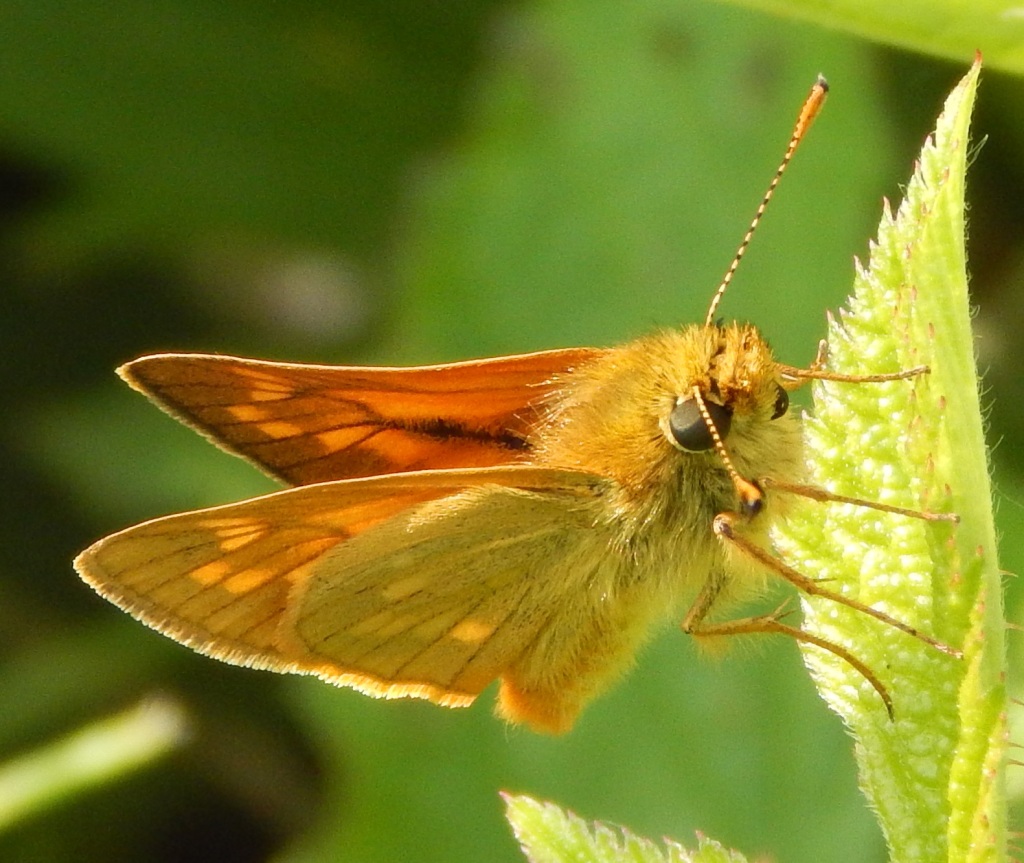

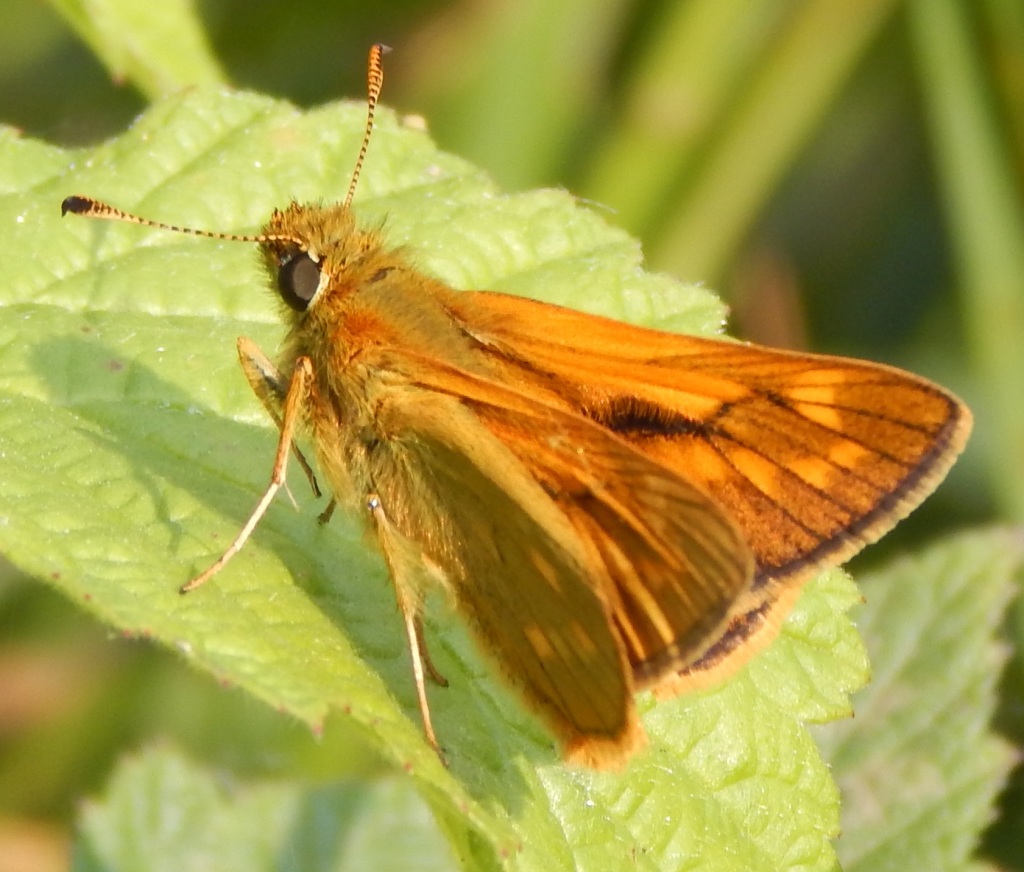

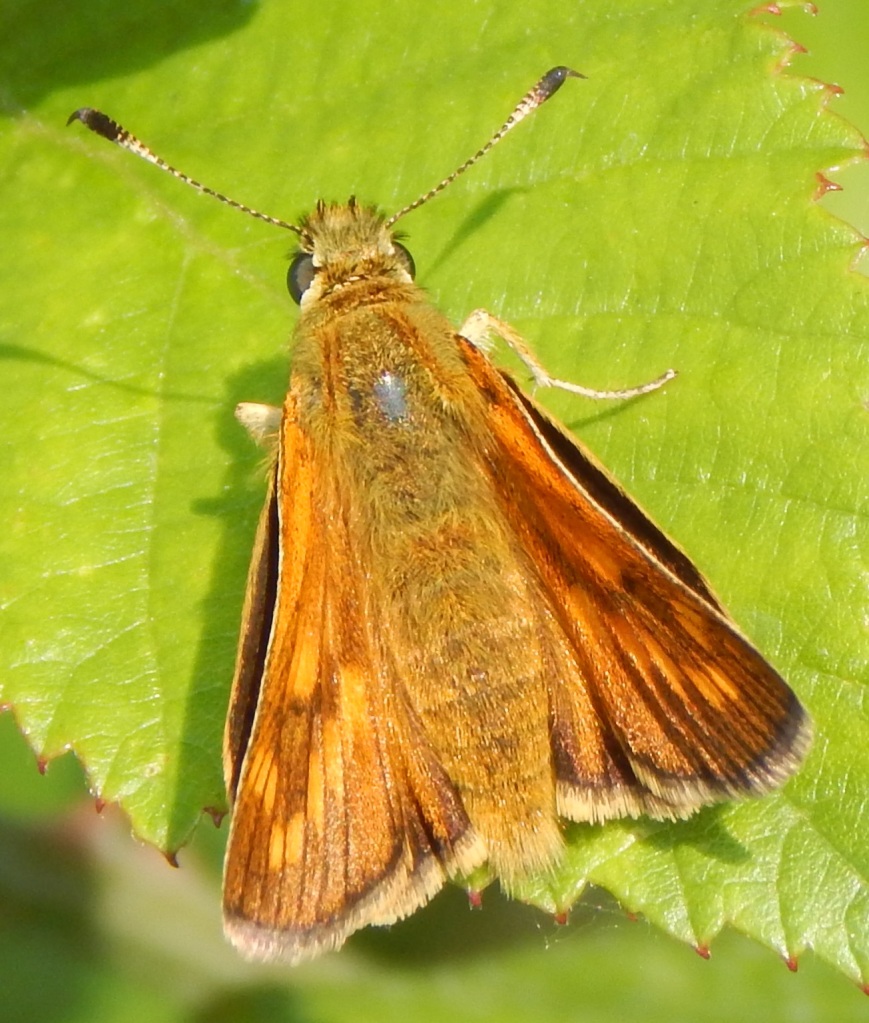
Small Skipper and Essex Skipper
I will consider these two together because the only way to tell them apart is from the colour of the tips of the antennae. Their wings are plain orange-brown with a dark border on the upper sides of the wings. The Small Skipper has orange tips to the antennae and those of the Essex Skipper are glossy black. They both have sex-brands, less distinct than the Large Skipper.
The British range of the Small Skipper is not quite as wide as the Large Skipper as it doesn’t extend quite as far as Scotland. Further afield, its range includes most of Europe, north Africa and the Middle East.
The Essex Skipper has a very similar range but was not seen in Britain until 1889. Its range is extending and it is now found far from Essex – as far as about Bridgwater, the Welsh borders and Grimsby.
Both like similar habitats to the Large Skipper, so it is not unusual to find all three types together.
These are all Essex Skippers.

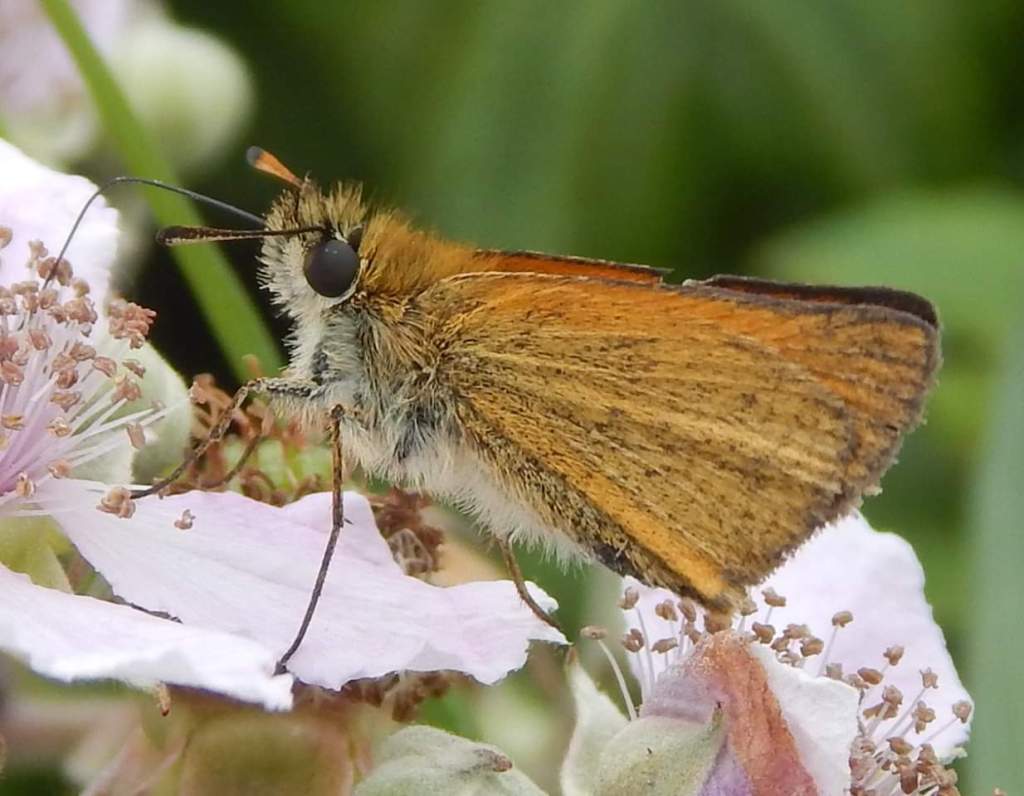
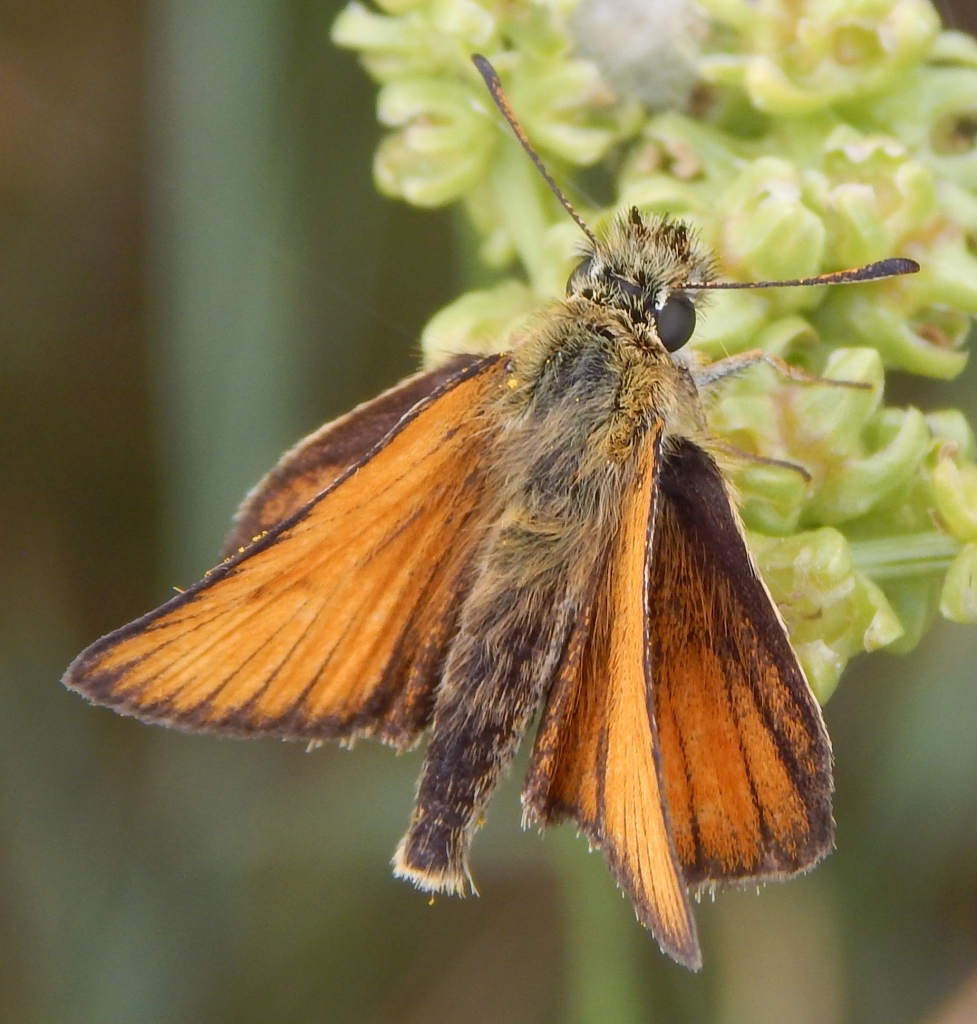


Other Notes
These are aptly named Grass Skippers and you may find them on open grassland as the only butterflies in evidence.
See also
We have a few more butterflies to come.
